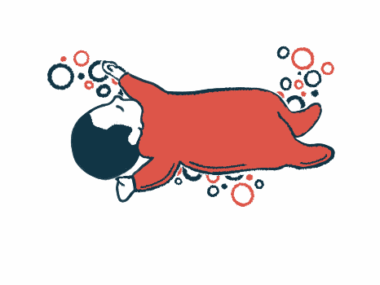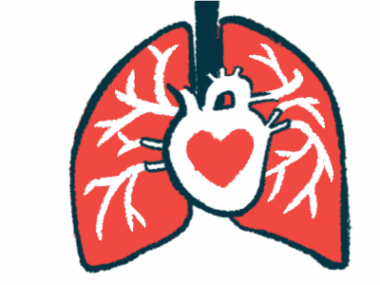Children’s cases show porphyria diagnosis in kids rare, possible: Study
Researchers highlighted need for proper treatment, management of condition
Written by |

Four cases of children diagnosed with porphyria were described in a recent report where researchers highlighted that, while porphyria is commonly considered an adult disease, it’s important for clinicians to consider it as a possible diagnosis in children to facilitate proper management.
The study, “Porphyrias: Uncommon disorders masquerading as common childhood diseases,” was published in the Journal of Postgraduate Medicine.
Porphyrias are a group of disorders caused by mutations in genes that are needed for the production of heme, a molecule required for oxygen transport in the body. As a result of these mutations, molecules called porphyrins, which normally are made as part of the heme production cycle, buildup to toxic levels in body tissues, ultimately leading to disease symptoms.
Porphyria is most commonly diagnosed in early adulthood, though symptoms may manifest during childhood in some patients.
In this study, scientists in India described four cases of children with porphyria who were seen at their clinic, aiming to highlight the importance of considering porphyria as a potential diagnosis for children with disease-typical symptoms.
“The perception of porphyrias as an adult disease could result in suboptimal awareness among general practitioners and pediatricians, and consequently hamper early suspicion and diagnosis,” they wrote.
Symptoms in cases of 4 children lead to porphyria diagnoses
The first case was that of a 10-year-old girl, who was referred to the researchers’ center for what was initially believed to be a digestive tract infection or an intestinal obstruction. Over the course of three days in the hospital, she experienced seizures and autonomic dysfunction — abnormalities in unconscious bodily processes, like heart rate and blood pressure.
These symptoms led clinicians to suspect porphyria. Blood and urine tests then confirmed she had high porphyrin levels. Genetic testing ultimately identified a mutation in the PPOX gene, confirming the diagnosis of variegate porphyria (VP).
The girl was given pain and antiseizure medications, as well as a blood pressure lowering medication called propranolol to help ease her symptoms of autonomic dysfunction. She was also given sugar-rich intravenous infusions followed by a carbohydrate-rich diet. Researchers noted that into-the-vein, intravenous, hemin therapy would have been preferred to treat the girl, but the medication was not available due to financial constraints. Nevertheless, her symptoms eased within two days.
The second case described in the study was that of an 18-month-old boy. His urine had been dark red starting shortly after birth, and in his first months of life he had developed lesions on the skin of his fingers and cheeks, as well as discolored teeth.
His symptoms were “highly suggestive of porphyria,” the researchers wrote. Genetic testing then revealed the presence of a mutation in the UROS gene, confirming the diagnosis of congenital erythropoietic porphyria (CEP).
The boy was given blood transfusions and started on supplements of beta‑carotene and vitamins A, D, and E; he also was given barrier sunscreen to protect his skin. Over six months of treatment, his skin lesions gradually became less severe. He is currently being considered for a potentially curative blood stem cell transplant.
In the third case, an 8-year-old boy was referred to the researchers’ clinic due to fever, seizures, and altered sensory capacities. The boy had a prior history of throbbing headaches and abdominal pain. His father also reported similar symptoms, including a history of headaches and a childhood seizure.
The boy was initially treated with the anti-seizure medications phenytoin and sodium valproate, but these caused his seizures to worsen. Further clinical examination and imaging tests led physicians to suspect of porphyria. Based on this suspicion, phenytoin and sodium valproate, which are known to be porphyrinogenic (induce the production of porphyrins and potentially worsening porphyria), were discontinued and other nonporphyrinogenic seizure medicines were given, along with medications to manage pain and other symptoms.
His symptoms gradually resolved over the next several days. The family could not afford genetic testing to confirm the diagnosis, but researchers said his clinical picture was overall indicative of acute intermittent porphyria (AIP).
The fourth case was that of an 10-year-old boy whose skin developed lesions in response to sunlight, a common porphyria symptom. He also had a history of vomiting, abdominal pain, and jaundice (yellowed skin and eyes, a sign of liver damage). When he was referred to the researchers’ center, he was suspected of having an autoimmune disorder or liver infection.
Genetic testing ultimately identified a mutation in the FECH gene, confirming the diagnosis of erythropoietic protoporphyria (EPP). The boy was given vitamin supplements, as well as high-powered sunscreen and advised to wear clothing to avoid sun exposure. After several months, his skin lesions had almost completely resolved, according to researchers.
Collectively, these cases highlight the importance of an accurate diagnosis for children with porphyria so that they can get the best care possible, and avoid medications that may worsen their condition.
“Though porphyrias are rare in children, unexplained neurovisceral or phototoxic symptoms should arouse suspicion and trigger a panel of investigations,” the team wrote, adding, that molecular diagnosis “also facilitates family screening, genetic counseling, and timely treatment.”






